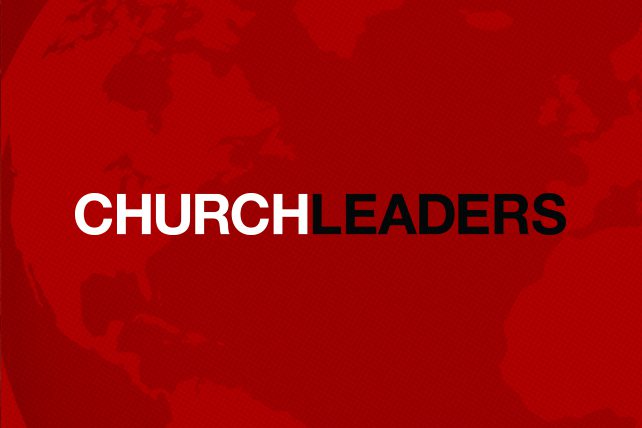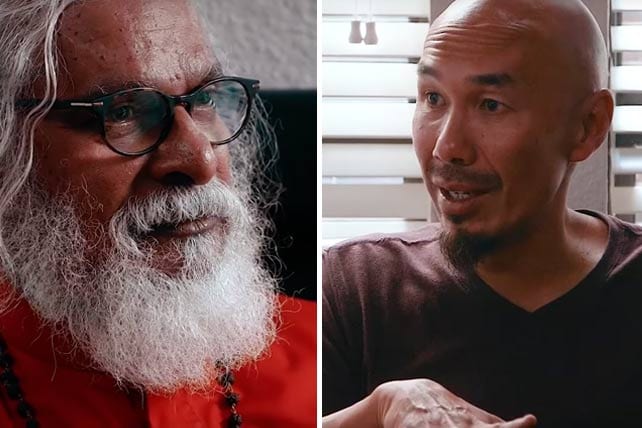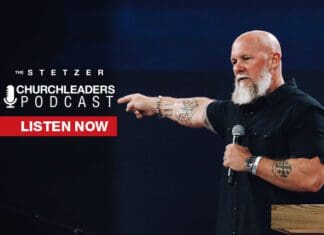In my twenties, I spent a lot of time sleeping in camp motel rooms, eating powdered eggs, and leading youth camp worship services. At one such event, I was on stage, getting ready to lead the post-sermon worship, when the camp speaker – Afshin Ziafat – asked the students a question about Scripture memory. Jesus saved Afshin out of a Muslim background, so this is how he phrased the question: “If I was still a Muslim, how many of you could walk on stage and share the Gospel with me, using only the Scripture that you have memorized?” I remember standing behind Afshin and thinking “Lord, please don’t let him call on me.”
Up to this point in my life, I had put a lot of time and effort into my craft. I led worship 3 times per week, I learned how to take care of my voice and project to an audience, I memorized every song on that first Jars of Clay record (even the ones in alternate tunings), but I had not given much time or effort to Scripture memory.
It was in this moment that I felt convicted by the Holy Spirit to devote myself to hiding God’s Word in my heart. From my perspective, this is when my real ministry work began.
One Encouragement: Make Scripture memory part of your daily routine.
My daily to-do list includes three non-negotiables: Bible reading, prayer, and Bible memory. There’s no “day off” to rest FROM these disciplines.
Trust me, I’ve tried that. If I spend my “day off” watching college football, drinking Dr. Pepper, and reading sports blogs, I will end up feeling irritable and restless by the end of the day. The Bible tells me (and experience has shown me) that true rest is found in Jesus (Matthew 11:28), and I encounter Jesus through Scripture memory, so even vacation days and lazy Saturdays should include time spent hiding God’s Word in my heart.
The Bible doesn’t prescribe a method for Scripture memory. It simply encourages us to do it (Psalm 119:11). For me, the “Bible Memory” app has been helpful.
I usually (not always) start my day by reading a passage from a Bible reading plan, and when a verse sticks out during my time of reading, I add it to my Bible Memory app. Then, I simply make sure that I’ve spent time working through the verses that are assigned to me on the app each day. The app makes sure that these verses are in good rotation throughout the year. If I add a verse on Monday, it’ll make sure that I review it a few times that week. If I get the verse correct each time, the app will put it into a weekly rotation (then monthly, then bi-monthly, etc).
Because the app is on my phone, I can use it while waiting on an oil change, during commercial breaks of a basketball game, in moments when I would otherwise be looking at Instagram, etc. I start my day with Bible reading, but this discipline of Bible memory happens throughout the day, whenever the opportunity presents itself.
One Warning: Never quote Scripture for the sake of quoting Scripture.
My first Sunday at the Austin Stone was January 6, 2013. I must have quoted 10 or 15 Scriptures from the stage that day. Later that week, Aaron Ivey took me out to lunch to share some encouragements with me. He also gave me a critique. In the kindest way possible, Aaron told me that my Scripture quoting was distracting.
What? My Scripture quoting was distracting?
Through Aaron’s gracious feedback and through the conviction of the Holy Spirit, I realized that people walked away from the worship service thinking “wow, that worship leader really knows his Bible verses.” Aaron didn’t say it in those words, but I could sense that this was the case. As a worship pastor, I never want the congregation to walk away thinking about my abilities as a musician, public speaker, Scripture memorizer, etc. I want them to walk away thinking about Jesus, so I should only quote Scripture in such a way that people would leave the service impressed by Jesus.
In response to this conviction, I began to read directly from the Bible during my call to worship. Yes, I could quote the Scripture from memory most Sundays, but who am I trying to impress? I want people to see that I am reading this passage straight from the Word. There are plenty of other ways that Scripture memory can affect my ministry. It comes out in pastoral conversations and prayers. It affects how I think and act and speak to others. Put simply, Scripture memory should make me look more like Jesus. So, there’s no need for me to dramatically quote a large portion of Scripture from memory in front of a large group of people, unless I am convicted by the Holy Spirit to do so.
Even without a public platform to display my Scripture memorization, I can trust that my time spent hiding God’s Word in my heart will not return empty (Isaiah 55:11).
This article about Scripture memory originally appeared here.

















